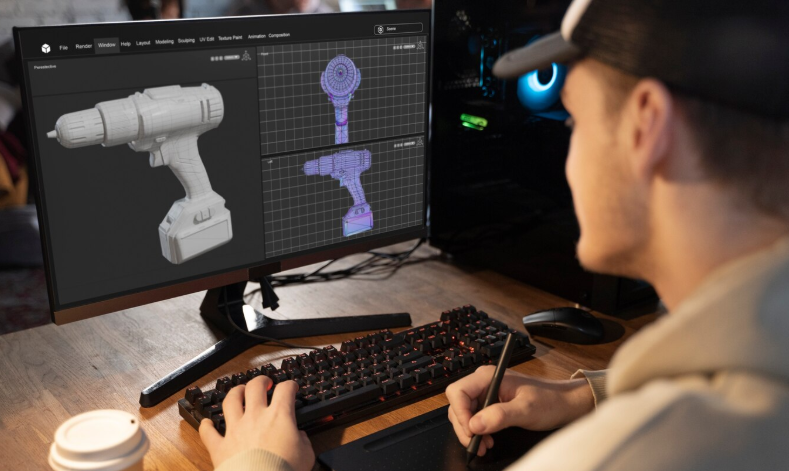In today’s fast-paced world, productivity is key to success. Professionals, businesses, and individuals alike are constantly seeking ways to streamline tasks, improve efficiency, and manage time more effectively. Virtual assistants (VAs) have become a game-changer in this regard, offering innovative solutions to everyday challenges. These AI-powered tools, such as Amazon’s Alexa, Google Assistant, Apple’s Siri, and Microsoft’s Cortana, are now integral parts of modern productivity strategies.
Virtual assistants have evolved from simple voice-activated tools into highly sophisticated systems that can manage a wide range of tasks, automate processes, and enhance user interaction. This article explores how virtual assistants are shaping productivity in various sectors and their impact on work and personal life.
1. What Are Virtual Assistants?
Virtual assistants are AI-driven applications designed to assist users in completing tasks or managing information through voice commands, touch interfaces, or other interactive methods. They utilize Natural Language Processing (NLP) and Machine Learning (ML) to understand user queries and provide relevant responses or actions.
Virtual assistants can be integrated into smartphones, smart speakers, computers, and other smart devices, enabling users to interact with technology seamlessly. These assistants can handle a variety of tasks, ranging from setting reminders and managing calendars to controlling smart home devices or providing personalized recommendations.
2. How Virtual Assistants Enhance Productivity
a) Streamlining Daily Tasks
One of the primary ways virtual assistants impact productivity is by automating routine tasks. Virtual assistants can handle tasks like setting reminders, scheduling meetings, sending messages, and organizing calendars, allowing individuals to focus on more important activities.
- Example: Instead of manually adding events to your calendar, you can simply ask your virtual assistant to schedule meetings or remind you of upcoming appointments. This saves valuable time that can be better spent on critical tasks.
b) Time Management and Task Organization
Virtual assistants are equipped with robust organizational tools that help users manage their time more effectively. By syncing with calendars, email accounts, and task management apps, they can provide real-time reminders and ensure deadlines are met.
- Example: A virtual assistant can send reminders about deadlines, offer time-blocking suggestions, or even prioritize tasks based on importance, enabling users to stay organized and efficient throughout the day.
c) Simplifying Communication
Virtual assistants simplify communication by providing hands-free capabilities, especially in the workplace. For example, many virtual assistants can send emails, make calls, or send text messages via voice commands.
- Example: If you’re driving or multitasking, you can ask your virtual assistant to send a quick message to a colleague or make a phone call without ever having to touch your phone, improving both safety and efficiency.
d) Data Management and Information Retrieval
Virtual assistants can help manage vast amounts of data and assist users in retrieving information quickly. Whether it’s looking up documents, finding the latest market trends, or answering frequently asked questions, virtual assistants are invaluable in retrieving data in an instant.
- Example: Virtual assistants can search through emails, files, or cloud-based platforms to retrieve specific documents or information, eliminating the need for time-consuming searches.
e) Personalization of User Experience
Virtual assistants use AI and machine learning to understand individual preferences and habits. This allows them to offer personalized suggestions, automate repetitive tasks, and provide recommendations based on past interactions, creating a tailored experience for each user.
- Example: If you frequently ask your virtual assistant for local restaurant recommendations, it will remember your preferences and suggest options that match your tastes and location in the future.
3. Impact of Virtual Assistants on Different Sectors
a) Workplace Productivity
Virtual assistants have significantly transformed the way people work, especially in office environments. They automate routine administrative tasks, manage calendars, and even help with project management. This allows professionals to focus on high-priority tasks, increasing productivity.
- Example: Virtual assistants like Microsoft’s Cortana can schedule meetings, send reminders, and manage tasks in collaboration with office software like Microsoft Outlook and Teams, improving teamwork and reducing manual coordination.
In addition to administrative tasks, virtual assistants are also used in customer service, where chatbots and voice assistants provide instant support to clients and customers, reducing wait times and enhancing service delivery.
- Example: Amazon’s Alexa for Business can help employees schedule meetings, order office supplies, or manage inventory, thereby streamlining business operations and improving productivity.
b) Personal Productivity
On a personal level, virtual assistants provide immense value by simplifying daily life. They help manage household chores, organize personal schedules, and even track health and fitness routines. This efficiency frees up more time for individuals to pursue their personal or professional goals.
- Example: A user can ask their virtual assistant to set reminders for appointments, help with grocery shopping by creating shopping lists, or even control their smart home devices for comfort and convenience.
c) Education and Learning
In the education sector, virtual assistants are being used to enhance both teaching and learning experiences. Students can interact with virtual tutors, ask questions, and retrieve study materials, while teachers can automate administrative tasks, such as grading or answering frequently asked questions.
- Example: Virtual assistants like Google Assistant and Alexa are increasingly being used to assist students in learning by providing personalized information, helping with assignments, or answering academic queries.
For educators, virtual assistants can help schedule lessons, track student progress, and assist with administrative duties, allowing more time for personalized instruction.
d) Healthcare and Well-being
Virtual assistants are also making an impact in the healthcare industry by supporting patient care and promoting healthier lifestyles. They can remind patients to take medication, track fitness goals, and provide healthcare information, making it easier for individuals to manage their well-being.
- Example: Virtual assistants like Siri and Google Assistant can set medication reminders, provide health tips, or even check symptoms, offering immediate assistance to users without requiring a doctor’s visit.
4. Benefits of Virtual Assistants in Productivity
a) Increased Efficiency and Time Savings
By automating routine and time-consuming tasks, virtual assistants allow users to focus on more meaningful work. Tasks such as scheduling, answering emails, and setting reminders become quicker and more streamlined, leading to overall time savings.
- Impact: With less time spent on administrative tasks, individuals and businesses can allocate resources to more valuable activities, enhancing productivity.
b) 24/7 Availability
Unlike human assistants, virtual assistants are available around the clock, ready to assist users whenever they need it. This is particularly beneficial for individuals working across different time zones, as virtual assistants can work without interruption.
- Impact: Whether it’s scheduling a meeting in a different time zone or managing tasks outside of regular working hours, virtual assistants offer flexibility and support at all times.
c) Cost-Effective Solution
Implementing virtual assistants in both business and personal contexts can be more cost-effective than hiring additional human staff or personal assistants. Virtual assistants offer a highly scalable solution that requires little to no additional maintenance.
- Impact: Small businesses, entrepreneurs, and individuals can benefit from the advanced capabilities of virtual assistants without incurring high costs, making them an attractive alternative to human labor.
d) Improved Decision Making
With instant access to information and streamlined workflows, virtual assistants provide users with more data and insights to make informed decisions quickly. The ability to retrieve and organize information efficiently leads to better decision-making capabilities.
- Impact: Whether it’s a professional making a strategic business decision or an individual managing personal finances, virtual assistants empower users to make timely, well-informed choices.
5. Challenges and Limitations of Virtual Assistants
Despite the many benefits, virtual assistants also present certain challenges and limitations:
a) Privacy Concerns
Virtual assistants continuously listen for voice commands, raising concerns about privacy and data security. Sensitive information or personal conversations may be unintentionally recorded or misused if not properly secured.
- Challenge: Ensuring that virtual assistants protect user data and offer transparency about data usage is critical for user trust.
b) Dependence on Technology
Relying heavily on virtual assistants could lead to over-dependence on technology, potentially reducing critical thinking and problem-solving skills. If the assistant encounters an error or is unavailable, users may struggle to complete tasks.
- Challenge: It is essential to maintain a balance between utilizing virtual assistants and nurturing personal skills.
c) Limited Contextual Understanding
While virtual assistants have become smarter over time, they still struggle with complex or ambiguous requests. Their understanding of nuanced or context-specific commands can be limited, requiring users to phrase requests in specific ways.
- Challenge: There is still room for improvement in natural language processing, especially for more sophisticated queries or multi-step tasks.
6. The Future of Virtual Assistants in Productivity
The role of virtual assistants is expected to continue expanding, with significant advancements in AI and machine learning. In the future, virtual assistants could:
- Become even more intuitive: With improved natural language processing and machine learning capabilities, virtual assistants will better understand complex requests and provide more personalized responses.
- Integrate seamlessly with more devices: As IoT devices proliferate, virtual assistants will integrate with even more appliances, smart devices, and business systems, offering a fully connected experience.
- Become proactive: Future virtual assistants could anticipate needs and offer solutions before being asked, creating a truly proactive assistant experience.
Conclusion
Virtual assistants are undoubtedly transforming modern productivity by automating tasks, enhancing time management, improving communication, and increasing efficiency. Whether in the workplace, at home, or in education and healthcare, they have proven to be invaluable tools that free up time for higher-value activities. As technology continues to evolve, virtual assistants will only become more integrated into our daily lives, further reshaping the way we work and live.


